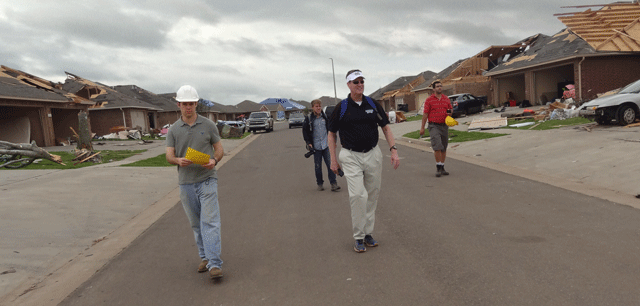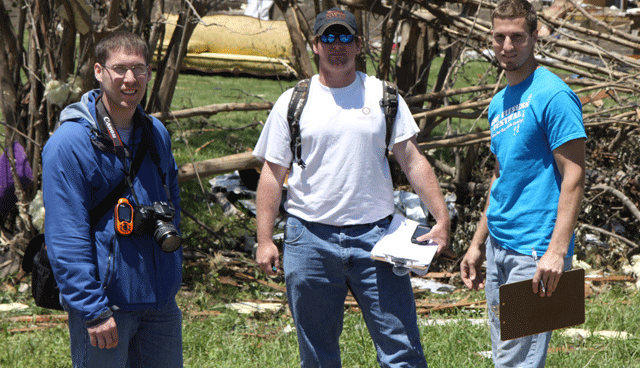


The Storm Prediction Center and social media websites, like Twitter, are useful tools in getting near real-time update on potential tornado outbreaks and following the events as they transpire. To monitor the progress of tropical cyclones a few helpful sites are the National Hurricane Center as well as their Facebook page.
Another means of monitoring the web for possible extreme wind events is Google’s free online product: Google Alerts, which are email updates of the latest relevant Google results based on your topic of interest (A helpful query would be: Tornado -RAF, -concert, -relief).

Typical Deployment. The Wind Hazard Damage Assessment team takes on the responsibility to organize a team, equipment, and travel arrangements, within days after an extreme wind event in order to conduct on the ground surveys. These on the ground damage surveys allow us to advance our knowledge of how structures are built and how they fail; our research in turn helps in the development of structural systems that are appropriate for both hurricanes and tornadoes throughout the state of Florida.
Faculty and students from different universities, including the University of Florida, arrive on site, 5-7 days after an extreme wind event and spend on average 3-4 days systematically collecting spatially related engineering data. The data is then analyzed, the results documented in a final report approximately 2-3 months after the event, and then made available to the public through journals and conferences, ideally 12 months after the event.
Location Approach Overview. Upon arrival on damage site synchronize camera time to GPS unit and take photo of GPS with time visible. To reduce infield tasks, leave GPS unit run recording points. Walk transects (from no damage to no damage), collecting field data of engineered, critical, and residential structures; safe rooms and safe spots; debris movement; and unusual situations.
After collecting in-field data, the goal will be to create a spatial data set of rated photos, map these photos (or data) in GIS and publish to the Web immediately
These notes have been extracted from: Graettinger, Andrew. “Moore, OK Deployment.” PowerPoint presentation. NCED Conference Center and Hotel, Norman, O K. 26 May 2013.

The safety of students and staff on a damage assessment is of prime importance. Each member is responsible for her or his own safety but others are around to be an additional pair of eyes and ears; each is to look out for the other.
As a member of the Wind Hazard Damage Assessment team, it is important to dress appropriately and be careful where you are walking and be aware of your surrounding. If going into a damaged home, wear hard hat and maybe gloves. Inform someone of where you will be when out on the field.
The team leader is responsible for making sure the Damage Assessment Team Emergency Contact Information List document is filled out.









